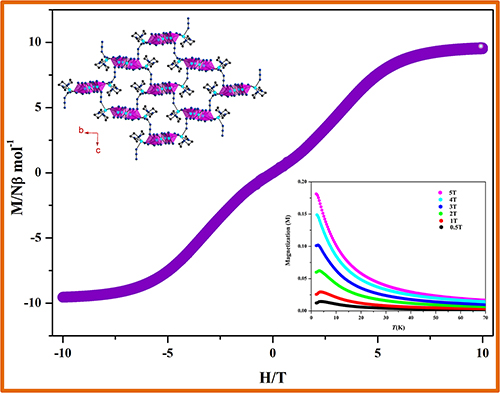 |
|
|
2. Magnetism, Proton Conduction, Ferroelectric, Heterogeneous and Photocatalytic Behaviour of Framework Compounds. Extensive studies have been made towards correlating the MOF structures and properties. The properties that have been of interest are (i) magnetism, (ii) ferrolectricity, (iii) proton mobility, (iv) luminescence and (v) catalysis The controlled design of new magnetic network compounds based on azides has been initiated. Compounds based on Cu2+ ions clusters stabilized in extended structures exhibit ferrimagnetic behaviour
Reference: S. Mistry, J.-P. Sutter and S. Natarajan, 2016. DOI: 10.1039/C5DT04387E. Room temperature ferroelectric behaviour and multiferroic materials are an important class of compounds. Recent studies from the group suggest that such compounds can be designed and prepared by carefully adjusting synthetic parameters. Solvent dependent room temperature ferroelectric behaviour has been studied with success
Reference: S. Bhattacharya, S. Pal and S. Natarajan, Chem. Plus Chem. Doi: 10.1002/cplu.201500564 Proton mobility is an important area due to the emergence of fuel-cell as an alternate source for energy. Many MOFs have been investigated for their proton mobility with reasonable success
References: S. Bhattacharya, M. Gnanavel, A. J. Bhattacharyya and S. Natarajan, Cryst. Growth and Des. 2014, 14, 310-325.
In the area of luminescence, many lanthanide based compounds have been investigated with good excellent emission properties. The most notable one being the two-photon absorption in Nd containing compounds
References: S. R. Sushrutha, S. Natarajan, CrystEngComm. 2014, 16, 4774–4782. In the area of heterogeneous catalysis, the studies suggest mainly Lewis acidic and basic catalytic behaviour. A number of catalytic reactions have been carried out with good selectivity
References:
|





